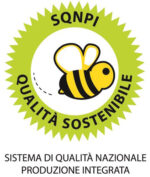Land of wine, antique, situated north of the beautiful city of Verona and east of the Garda Lake, and protected from the Lessini mountains: this is Valpolicella, one of the most prestigious areas of the Italian wine – world suited since long time to the wine production and divided today in three areas of production, all part of the DOC denomination: the Valpolicella Classica (classical), Valpantena and the enlarged Valpolicella.
The Valpolicella Classica

The Valley
The winery is located in the Marano valley, in the middle of the classical area, considered the most historical and know part. The cultivation of the vines is in man-made terraces, called in Verona dialect “marogne”. In addition to the municipality of Marano, the classical area is extended in four other villages: Sant’Ambrogio, San Pietro in Cariano, Fumane and Negrar.
The Vineyards
The Family Clementi owns 14 hectares and the vineyards are situated in 300/400 meters of altitude, divided in autochthone vines: Corvina, Corvinone, Rondinella, Molinara and in less percentage Oseleta and Croatina. The training system chosen by the family is traditional “pergola” with about 3.300 vines pro hectare. The vineyards are located south-west direction, this hillside is considerate one of the most renowned in Valpolicella.
The Terroir
The soil in the classical Valpolicella is majorly calcareous, the climate is mild and tempered, tending to Mediterranean. The rainfall are from 850 mm in the year up to 1.200 mm.
Cherries and… grapes
In some parts of the propriety it is still possible to find some cherry-threes, for many years those were the first economical income in the region, nowadays almost replaced with the cultivation of the vines.
Soil
The ground is made of few soil, with a calcareous and clay settlement and with a lot of skeleton. Not very fertile soil, so well adapted to the cultivation of vineyards and importante presence of potassium and calcium.
Climate
Valpolicella has a good climate, near the mediterrean for almost all year, protected from the Lessini mountains and with a sun exposition toward south.
Grapes
Corvina, Corvinone, Rondinella, Molinara, Oseleta, Croatina.
The most vocated and historical area for the cultivation of the vines
Son cari a Bacco questi colli, e cara | questa fonte alle Naiadi è non meno. | Se troppo di quel Nume hai caldo il seno, | tu con quest’acque a rinfrescarlo impara. (Ippolito Pindemonte)




Vignaioli indipendenti


Winemaker is the one who live the vineyard, who get in touch with the vineyard in both sense, physically and spiritually. The winemaker is the person who get dirty his hands and his shoes to take care of his vines.
The family Clementi decided in 2017 to join the Federation of Independent Winemakers because totally aligned with the philosophy of the Federation, with the values and the requirements. The goal of this Federation is to combine all those winemakers who strongly believe and protect their territory, moreover, winemakers who produce the wine entirely in their cellars. The winemaker takes care and cultivate the vineyard, he harvests manually and vinify, he bottles and sells his wine. All this represent exactly the same philosophy of Clementi from the very beginning.
To be member of FIVI todays means not only an ethical choice but the will to communicate history and tradition, the one they all have in common, following a genuine profile and content, following something true, respectful and ethic.
The family also adheres to the National Integrated Production Quality System (SQNPI), a system implemented through specific technical standards for each culture and binding phytosanitary indications (production disciplinary). This includes agronomic practices, limitations on choice of phytosanitary products and number of treatments with a view to a lower impact on the environment and therefore allowing to achieve an economically sustainable production.
These actions are aimed to rationalizing agronomic techniques such as fertilization, the use of water and defenses against diseases and parasites and reducing chemical interventions. The goal is to treat only if necessary and to respect the environment as much as possible.





